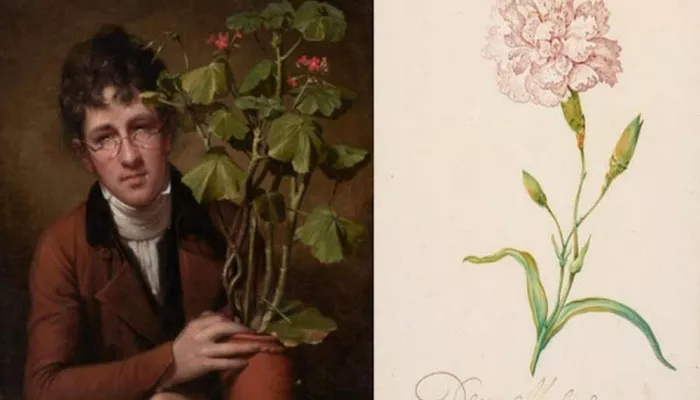Plant names, or phytonyms, are a crucial part of any language’s vocabulary. They not only reflect a specialized lexicon but also reveal much about the mindset and culture of a community. By examining how speakers create these names, linguists can gain insight into a group’s perspectives and their view of the world.
The English language is rich in botanical terminology, and the stories behind plant names can be both intriguing and surprising. Here, we explore the origins of three unique plant names in English.
Carnation: An Unsolved Puzzle
The “carnation” (Dianthus caryophyllus), a flowering plant native to Southern Europe, presents a puzzling etymology. The name has been used in English since the 16th century, yet its origins remain unclear. One theory suggests that “carnation” may have evolved from “coronation,” referencing the ancient tradition of using the flower in crowns and garlands during ceremonies. However, this connection seems arbitrary.
Another name for the carnation is “clove pink.” Some scholars believe that its name is linked to the Middle French word carnation, which means “the color of skin,” as well as the Italian carnagione. This interpretation suggests that the flower’s original color was a bright pinkish-purple.
A more religious interpretation connects the name to the Latin word incarnātĭo, which means “incarnation,” signifying the moment God became human in the form of Jesus. While these theories provide interesting insights, the diverse colors of carnations—such as white, yellow, and red—complicate the etymology.
During the time when the carnation was likely named, it was prized for its beauty and fragrance, especially in Normandy. Therefore, its connection to Middle French culture is somewhat credible. However, despite these theories, the true etymology of “carnation” remains elusive.
Oleander: A Complex Origin
The name “oleander” refers to an evergreen shrub (Nerium oleander), known for its beauty and toxicity. Its etymology is similarly complex and remains uncertain. The term has been used in English since the 16th century but was already present in Vernacular Latin as oleaster by the late 14th century.
The root olea- is thought to relate to the Latin word for “olive” due to the similarity in leaf shape. This could have combined with a Late Latin term, lorandrum, which may be derived from the Latin rhŏdŏdéndrŏn, meaning “rose tree.”
The morphology of lorandrum was likely influenced by laurĕa, the Latin name for “laurel,” again reflecting similarities in leaf shape. The French term for oleander, laurier rose, translates to “laurel rose,” reinforcing these connections. Linguists face challenges in tracing the etymology of “oleander,” as it appears linked to a circle of other plant names, demonstrating the complexity of naming.
Geranium: A Name of Analogy
“Geranium” refers to a genus of flowering plants known for their vibrant colors. The term has been in use since the 16th century. Interestingly, the name does not derive from the plant’s appearance. Instead, it originates from the Botanical Latin term geranium, adapted from the Ancient Greek word geránion, which is a diminutive of géranos, meaning “crane.”
The naming reflects an analogy based on the similarity between the seed pods of geraniums and the head and bill of a crane. In fact, a common English name for the plant is “crane’s-bill,” highlighting this comparison. While the etymology of “geranium” is clearer than others, the imaginative process behind its naming reveals unique cognitive strategies used by people to describe the world around them.
Conclusion: The Importance of Etymology
Words are gateways to understanding our world, each with a complex origin story. The study of etymology allows us to uncover how our ancestors named the elements of their environment, dating back to prehistoric times.
Among the various terms in our languages, phytonyms help us understand how early speakers perceived plants and flowers in their daily lives. By studying these names, we can reconnect with the voices of those who lived before us, even when their words were never recorded in writing.
While some plant names remain enigmatic, this uncertainty offers fresh opportunities for historical linguists. Their efforts to unravel these mysteries will continue to open new linguistic pathways. The quest for understanding the origins of plant names is ongoing and always worthwhile.
Related topics:
- 5 Houseplants That Require Minimal Fertilizing
- Best Plants to Grow in October
- Study Finds Soil Bacteria Make Flowers More Attractive to Pollinators


